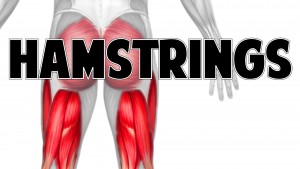
Today’s training is on the hamstrings, the large muscles in the back of the leg. We’ll see how they assist the glutes in the golf swing, as they help get rid of the angle created by your upper and lower body. These movements and muscle motions help with compression, lag, and power throughout the swing.
What's Covered: How the hamstrings make the hip fire for more speed.
Golf Pros Featured:
Instructors Featured: Clay Ballard
Video Duration: 2:56
This content is exclusively for our Instructor Membership
The Instructor Membership is not available for purchase yet. We'll let our All Access Members know when it becomes available.
Become an All Access Member Now!Video Transcription:
Hi guys, welcome back. Hope you guys are doing fantastic. In today’s video we’re going to talk about the hamstring. That’s the major muscle group, very large muscle that runs from the back of my leg all the way up to the top.
If you haven’t watched the glute video yet, we talk about the glutes and how you properly use the angle in the legs and the torso, go ahead and watch that one first. Then come back and watch this hamstring video afterwards.
They’re going to do very similar things. So in the downswing – or actually, your hamstring is connected to the bottom of your leg below your knee cap, and it’s also connected to your femur at one point, and also your lower pelvis.
It can either bend your leg backwards like this, that’s one motion, or it could pull your leg back in this direction. So as I’m starting to – let’s imagine that I’m bent here, as my hamstring kind of fires against my lower pelvis, it can help to bring my hips forward.
So in the golf swing this happens whenever we’re halfway down, we have some bend in the leg and the torso. Then as we come on through, if I go from this angle, imagine I’m hitting the ball this way you’ll be able to see this easier.
As I’m going down, we have this bend, and then as I’m coming through, we can see that we get rid of that bend, and as we come all the way on through to the finish, our pelvis is actually a little bit forward, and now you can really see that bend.
Our hamstring helps us to come and straighten that out as we release the golf club. So we’re flexing, or sorry, we’re relaxing the hamstring, and then as we’re coming through and releasing into the straight line release, that’s going to be flexing and kind of pulling this back.
The same thing with the left leg coming through the shot.
If you’re having somebody that is really having a tough time when they’re coming into the release – so let’s imagine that they’re used to doing an all-arms swing, we keep going back to this one, because it’s one where they use the lower body very poorly.
You’ll see an all-arms swing that looks like this. Well as I finish, I haven’t really used my hamstrings at all in the swing, I’ve just kind of turned off my lower body.
You may grab their hamstring, or show them where their hamstring is, and as they’re coming through get them to really extend as they release and come all the way on around. They’re going to feel this tight, and they’re going to feel like they’re engaging their hamstrings as they’re coming through the shot.
So that should help those guys out that are really having a tough time using the lower body. They’ll be able to feel the glutes a little bit more, and they’ll be able to feel their hips a little bit more, so those are two other areas that I might focus on first before I key in on the hamstrings. But that’ll help to explain it to them.
Again, as you start to really tell them how the body’s moving, which muscles are incorporated in that then it’s going to be lightbulbs kind of going off in their head. It seems very, very simple once they know how to move their body properly.
Good luck to you guys, good luck in your instruction. I’ll see you guys very soon, have a good one.

